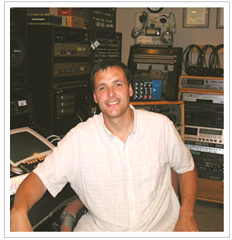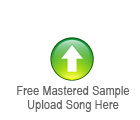 As a mastering engineer, my first job when beginning a new project is to enquire how the song/album will be marketed. Is the music solely for digital distribution? CD replication? What about vinyl cutting? All of these playback mediums require a different master.
As a mastering engineer, my first job when beginning a new project is to enquire how the song/album will be marketed. Is the music solely for digital distribution? CD replication? What about vinyl cutting? All of these playback mediums require a different master.
The difference between an audio master for CD Replication and vinyl is significant. The vinyl master requires strict guidelines with respect to very high and very low equalization and requires a great deal of dynamic range. The master for CD replication is typically much louder and the overall equalization is often dictated by the musical style. On the other hand, the difference between a master for CD replication and digital distribution (iTunes) is very subtle but very important not to overlook.
With digital distribution it is critical to ensure that the correct amount of headroom and dynamic range is left within a mix in order to translate properly when converted to a streaming and/or downloadable file. Using a song that is master for CD replication for the purpose of streaming often results in a noticeable loss of sonic quality.
Whether you are mastering a solo violin or a metal garage band, perceived volume is an important issue. The tools used in mastering—compression, EQ, limiting, are all ways of controlling dynamic range of a mix. Decisions about gain levels, dynamic range, and frequency response is what defines mastering.
Many feel that louder is better. The trend for louder music has resulted in ardent fans of high volumes and backlash from audiophiles, a controversy known as “the loudness wars.” This is solely an issue with music. Movies, for example, have very detailed standards for the final mastering volume of a film’s soundtrack. The music world doesn’t have any such standard, and in recent years the de facto process has been to make masters as loud as possible. While some feel that overly loud mastering destroys music others feel that the aesthetic of loudness is a great choice for particular styles of music.
With digital mastering there’s a limit to how loud you can make a track: 0DB. Trying to increase a track’s overall loudness beyond 0db results in distortion caused by clipping. The quietest parts of a song increase in volume, yet the louder parts don’t gain loudness due to the upper limits of the digital format.
iTunes and most other digital distributers don’t reject files for clipping, however iTunes will not market the song(s) as Mastered for iTunes.
A less obvious issue when setting gain for digital masters can occur on playback. Whether it’s a compressed file like an AAC file or an uncompressed file such as a CD, digital data goes through several processes to be converted to an analog signal for playback.
One common process is called oversampling. This up-samples the digital data at four times the original sample rate to improve the quality of the digital audio signal being converted to analog. If the original digital audio data is at 0dBFS, oversampling can result in undesirable clipping. And if the original was already clipped, oversampling can make it worse. A growing consensus is emerging that digital masters should have a small amount of headroom (roughly 1dB) in order to avoid such clipping.
In both digital and analog, the highest possible level will vary from track to track, depending on the material being mastered. Your decision about the volume and loudness of your tracks is a technical and creative choice. You might decide to take the listener on a dynamic journey through an album as a complete work, raising and lowering the volume level across the sequence of tracks to increase the music’s emotional impact. Alternately, you might pursue the loudest possible signal at all times.


Comments are closed.